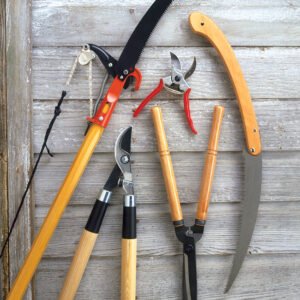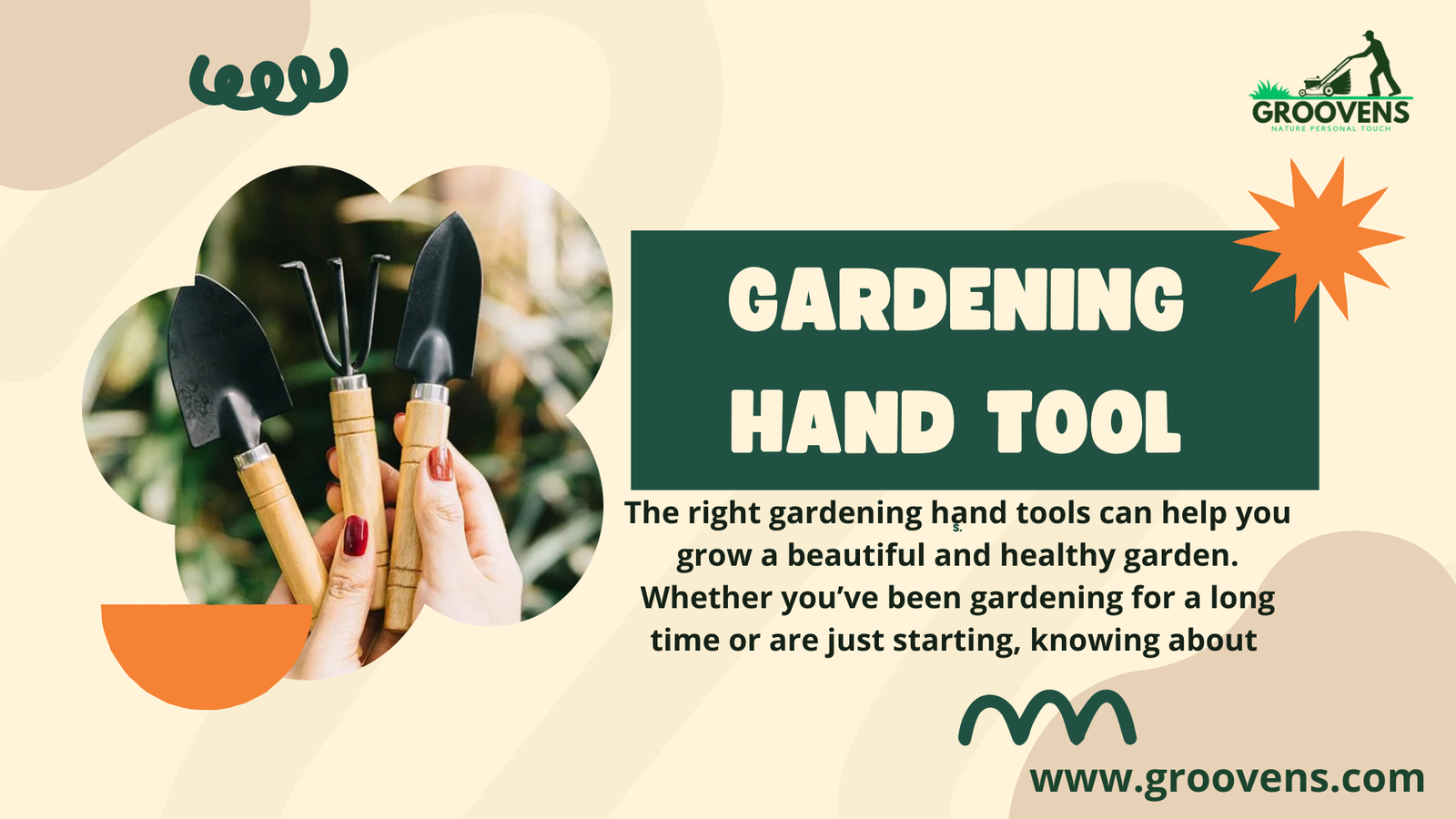The right gardening hand tools can help you grow a beautiful and healthy garden. Whether you’ve been gardening for a long time or are just starting, knowing about different hand tools and how they help you care for plants is essential. Some tools are digging, cutting, trimming, weeding, raking, or planting. Each tool has a particular job that helps your plants grow. In this simple guide, we will talk about the different types of gardening hand tools, how to pick the right ones, and how to use them safely and carefully. We’ll also learn how to clean and store these tools, so they last a long time.
Introduction to Gardening Hand Tool
Gardening is a fun hobby that many people love because it makes things look nice and gives a feeling of pride. Whether you have a small garden or a large yard, using gardening hand tool is very important for helping you grow plants successfully. These tools allow you to do many jobs, like getting the dirt ready for planting and ensuring your plants stay healthy. This section will explain why gardening hand tool are so helpful and how they benefit gardeners of all skill levels. Hand tools are great because they give you better control. Unlike power tools, which can be hard to manage and might hurt delicate plants, gardening hand tool let you be more gentle and precise.
Why Gardening Hand Tools are Essential for Every Gardener
Gardening hand tools are necessary because they help you care for your plants quickly and carefully. Here’s why they are great:
Careful Work
Hand tools let you do small, careful jobs like pulling weeds or trimming leaves so you don’t hurt your plants.
Can Do Many Things
Hand tools can be used for many tasks, such as digging holes, planting seeds, or cutting branches.
Not Expensive
They cost less than big machines, and you don’t need to fix them as much.
Easy on Your Body
Some tools are made to be comfy to hold so they don’t hurt your hands and arms.
Understanding Different Types of Gardening Hand Tool
Garden hand tools are small tools we use with our hands to help take care of plants. There are different kinds of hand tools; each does something special to make gardening easier. Let’s take a look at a few:
Digging Tools

Digging Tools help us work in the garden. They are essential for preparing the soil for planting and moving plants around. Here are some standard digging tools:
Spade: A spade is a vital tool with a flat, square blade. It helps us dig holes, break up hard dirt, and make nice edges around flower beds.
Shovel: A shovel looks like a spade but has a round blade and a more extended handle. We use it to lift and move big piles of dirt, mulch (which helps plants), or compost (which is food for plants).
Trowel: A trowel is a small tool that fits in our hands. Its pointed blade is excellent for digging tiny holes, moving small plants, or getting into small spaces.
Cutting Tools for Plants

Cutting tools help us care for plants by cutting, shaping, and trimming them. They keep our plants healthy and looking nice. Here are some standard cutting tools:
Pruning Shears: These are like scissors for plants! They have sharp blades and can cut small branches and stems. We use them to snip off dead leaves or to help flowers and small trees grow better.
Hedge Shears: These look like giant scissors and have long blades. They are perfect for cutting and shaping bushes and hedges.
Pruning Saw: This tool is slightly different; it has a jagged edge like a saw. It’s used for cutting thicker branches that are too big for pruning shears. We use it when we need to trim more enormous trees or shrubs.
Pruning Tools

Pruning tools are special tools that help gardeners cut and shape plants. They help keep plants healthy by removing dead or sick branches. Here are some standard pruning tools explained:
Pruning Knife: This is a sharp tool with a curved blade. It helps you cut small branches very carefully. Gardeners use it to make precise cuts when they want to shape plants or connect new plants.
Loppers: Loppers look like giant scissors with long handles. They are great for cutting thicker branches that are too high or hard to reach with regular scissors. The long handles give you extra strength to cut!
Pole Pruners: Pole pruners are excellent because they have a long stick that can stretch high up. At the end, a saw or a special pruner can cut branches far up in trees.
Weeding Tools

Weeding tools are special tools that help us eliminate unwanted plants, called weeds, in our gardens. Weeds can take nutrients and water from our plants. So we want to remove them without hurting the plants we want to keep. Here are some standard weeding tools and what they do:
Hand Fork: This tool looks like a small fork with several prongs (the pointy parts). We use it to dig into the soil to loosen it, pull out weeds, and help the soil breathe.
Hand Hoe: The hand hoe has a flat, sharp blade at the end that looks like a paddle. We use it to slice off weeds right at the ground, making it easier to keep the garden tidy and letting our plants grow better.
Weed Puller: This tool has a long handle and a forked end that helps us pull out weeds, especially those with deep roots. It’s like a little shovel that digs down into the soil to grab the weed and its roots so it won’t grow back.
Choosing the Right Gardening Hand Tools: What to Consider
When putting together your gardening tools, you must consider a few things to ensure you pick the right ones. Here are some easy tips to help you choose:
Material and Durability
The material of your gardening hand tools affects how long they last and how well they work. Tools made of stainless steel don’t rust and are very strong, which is excellent if you use them a lot. Wooden handles, especially those made from complex wood, are solid and pleasant.
Comfort and Ergonomics
Gardening hand tool designed for comfort help you avoid getting tired or hurt while gardening. Look for tools with soft grips that don’t slip and fit your hand comfortably. This makes it easier to use them for a long time without feeling sore.
Weight and Size
Lightweight tools are more accessible to lift and use for a long time, but they must still be strong enough for hard work. Also, if a tool is the right size for your hand, it will be easier to control and energize you as quickly as possible.
Specialized Tools
While essential tools like trowels (for digging) and pruning shears (for cutting) can do many jobs, there are special tools for specific tasks. For example, a bulb planter helps you quickly put bulbs in the ground, and a broad fork makes it easier to loosen the soil. These unique tools can save you time and effort when working in the garden.
Maintenance Tips to Extend the Life of Your Gardening Hand Tools
Proper maintenance of your gardening hand tools is crucial to ensuring they last for years. Here are some simple maintenance tips to keep your tools in top condition:
Cleaning
After using your tools, wash them off with water to remove dirt and plant bits. If dirt is stuck, you can use a stiff brush to scrub it off.
Sharpening
Tools with sharp edges, like pruning scissors and Hori Hori knives, must be kept sharp to cut easily. You can use a unique stone or file to make the edges sharp again.
Oiling and Lubrication
After cleaning your tools, oil the metal parts to prevent rust and help them work smoothly.
Storage
Keeping your tools safe from moisture is essential, which can make them rusty. Store them in a dry place like a shed or garage. Hanging them on a wall or a rack helps keep them organized and safe from getting damaged.
Conclusion
Gardening hand tool are essential for keeping your garden healthy and pretty. Tools like shovels and scissors help you work better and feel comfortable while you’re gardening. When you choose suitable, easy-to-use tools and care for them, you’ll have more fun and help your plants grow strong.




